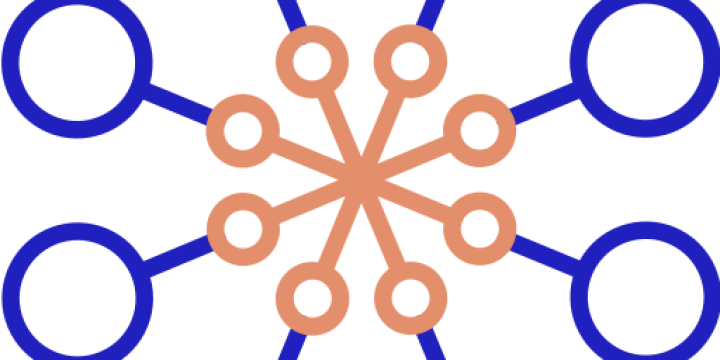News & Insights
Moving towards a Continuous form of Engagement
Five years ago, the Institute examined the concept of “continuous engagement” and highlighted how our traditional practice of running separate consultation programmes was largely reactive. Since then, a great deal has changed. The COVID-19 pandemic compelled organisations to operate online; residents’ trust in democratic institutions has fluctuated; and new frameworks, technologies, and case studies have demonstrated what a continuous approach can entail. This revised article revisits the reasons for adjusting our approach and offers practical guidance based on recent policy documents, research, and examples.
What is continuous engagement in 2025?
Internationally, the Open Government Partnership (OGP) requires local authorities to demonstrate ongoing engagement with non-governmental stakeholders when co-creating action opengovpartnership.org. OGP guidance emphasises that local governments must provide regular opportunities for dialogue and co-creation, involving both governmental and non-governmental actors. These models show that ongoing engagement is not about endless consultations but about sustained dialogue, relationship-building, and co-production.
Why continuous engagement matters now?
In 2020, we observed that the concept of continuous engagement lacked a definitive model. More recent guidance clarifies the principle: engagement should be embedded into an organisation’s DNA rather than added on for a statutory consultation. The Local Government Association’s New Conversations 2.0 guide encourages councils to “aim for continuous engagement with stakeholders and communities, to build trust on both sides” local.gov.uk. The guide emphasises that when engagement becomes instinctive, difficult decisions are less likely to trigger reactive consultations because councils and communities are already aligned. It also highlights that effective engagement should utilise multiple channels and consider hard-to-reach groups so that no part of the community is excluded.
- Inclusive participation. The Active Travel England Best Practice Guide to Community Consultation and Engagement stresses that engagement should not be limited to statutory exercises. It should happen between the authorities and the people who live, work or travel through the area. Case studies, such as York’s Big Transport Conversation, demonstrate how targeted interventions can reach underrepresented groups. In 2023‑24, York combined an online portal (allowing residents to drop pins on interactive maps) with visits to rural villages, schools, disability groups and the community. This dual approach enabled York to hear from people who do not usually respond to and informed the city’s 2024 Local Transport Plan.
- Building trust in a low‑trust environment. In low-trust settings, build feedback loops. A 2025 Frontiers case study on Bangkok’s Traffy Fondue shows that regular, two-way reporting and visible fixes both speed up issue resolution and strengthen trust between residents and city hall
- Digital‑first engagement. During the pandemic, many authorities adopted online platforms. Digital channels offer efficiencies and can reach people who cannot attend in‑person events. The Granicus article argues that digital‑first engagement supports a continuous democracy and can enhance transparency and trust. However, digital engagement must complement, not replace, face-to-face methods; the LGA’s guide warns that relying solely on online tools can exclude people who lack internet access or digital skills.
Designing a continuous engagement strategy
Based on recent guidance and practice, a continuous engagement strategy should include the following elements:
| Element | How it has evolved since 2020 | Evidence |
|---|---|---|
| Embed engagement into everyday work | Establish organisational culture that values dialogue. New Conversations 2.0 emphasises that engagement becomes second nature when councils routinely listen and respond. OGP Local requires continuous engagement mechanisms throughout the action‑plan cycle. | Councils should create cross‑departmental forums and train staff in engagement principles, ensuring that every service area knows how to involve stakeholders from the outset. |
| Provide regular spaces for co‑creation | Instead of ad‑hoc committees, create permanent panels or online forums where residents and stakeholders can co‑design policies. OGP guidance calls for a space for participation that facilitates inclusive and ongoing dialogue. | Regular meetings (e.g., quarterly) and accessible digital platforms help maintain momentum and allow issues to be raised early. |
| Use a mix of digital and in‑person channels | Hybrid models widen participation. The LGA guide warns that digital consultations alone can bypass stakeholders. York’s Big Transport Conversation combined a digital portal with visits to schools, disability groups and rural villages. | Choose channels based on audience needs, e.g., interactive maps for spatial issues; text messaging for quick updates; and targeted community visits for groups less likely to be online. |
| Ensure accessibility and inclusivity | Online engagement materials must comply with accessibility regulations. Engagement teams should provide interpreters and visit venues that are familiar to under‑represented groups. | Build in resources for translation, British Sign Language or captioning; design surveys in plain language; and use inclusive formats such as easy‑read documents. |
| Be transparent about data and privacy | Participants must know what data you’re collecting and why. Publishing summaries of feedback and showing how it influences decisions builds trust. | Provide clear privacy notices and follow data‑protection legislation; share anonymised results and action taken; and invite feedback on how engagement processes can improve. |
| Measure outcomes and refine approaches | Engagement isn’t a one‑off; evaluation should continue after formal consultations end. The LGA guide notes that evaluations should not be a substitute for long‑term measurements of trust and outlook. | Monitor engagement metrics (e.g., participant diversity, satisfaction surveys), track how feedback changes policies, and adjust strategies accordingly. |
Looking ahead
Continuous engagement is no longer merely an abstract ideal; it is becoming a vital part of democratic governance. Organisations such as Active Travel England show that combining digital platforms with targeted outreach can gather diverse voices and guide strategic decisions. Frameworks like New Conversations 2.0 and OGP Local offer structured guidance, highlighting regular dialogue, co-production, and building trust. Digital-first engagement tools, when paired with inclusive and accessible practices, can support continuous democracy and improve transparency.
By shifting from a reactive “problem‑solving” approach to a culture of ongoing dialogue, public bodies can minimise contentious consultations, make better decisions, and strengthen relationships with the communities they serve. The time to make continuous engagement the standard is now.
How tCI Can Help
Quality Assurance: Independent review at critical stages—from evidence protocol design through to final reporting—ensuring your approach to qualitative data meets legal and good practice standards. Our seven-stage QA process includes assessment of analysis methods, interpretation fairness, and compliance with Gunning, PSED and ICO requirements.
Early Assurance: A snapshot review during planning to sense-check your evidence framework, codebook design, and proportionality rationale before fieldwork begins.
Charter Workshops: Half-day sessions helping your team understand good practice standards for handling qualitative consultation data, including rigorous analysis and defensible interpretation.
Whether you’re preparing for a high-stakes service change or need confidence that your evidence approach will stand up to scrutiny, we can help. Contact tCI for Quality Assurance at hello@consultationinstitute.org
More news
When a council issues a Section 114 notice, it declares that it cannot balance its budget. Recent years have seen...
Public Consultation Requirements Public sector leaders routinely face a deceptively simple question: does this change require formal public consultation? The...
A Shift in Where Risk Lives Three cases in particular mark out the current territory: West Dulwich Service Station v...


